Why Does ABS Light Come On and Off?
As a responsible driver, it’s crucial to be aware of any warning lights that appear on your vehicle’s dashboard. One of the most critical indicators is the ABS (Anti-lock Braking System) light, which illuminates when there is a problem with your vehicle’s ABS. If you’ve noticed that your ABS light is coming on and off while driving, it can be a concerning and frustrating issue.
So why does the ABS light come on and off? This includes a faulty ABS module, low brake fluid, a malfunctioning brake system, and a faulty wiring harness or wheel speed sensor. Thus, this indicates a major problem that should be fixed as soon as possible. Turning the ignition key off and back on may help.
In this article, we’ll explore the common reasons why the ABS light comes on and off and what you can do to address the problem. Let’s dive into the world of ABS lights and get to the bottom of this common issue.
Why Does ABS Light Come On and Off?
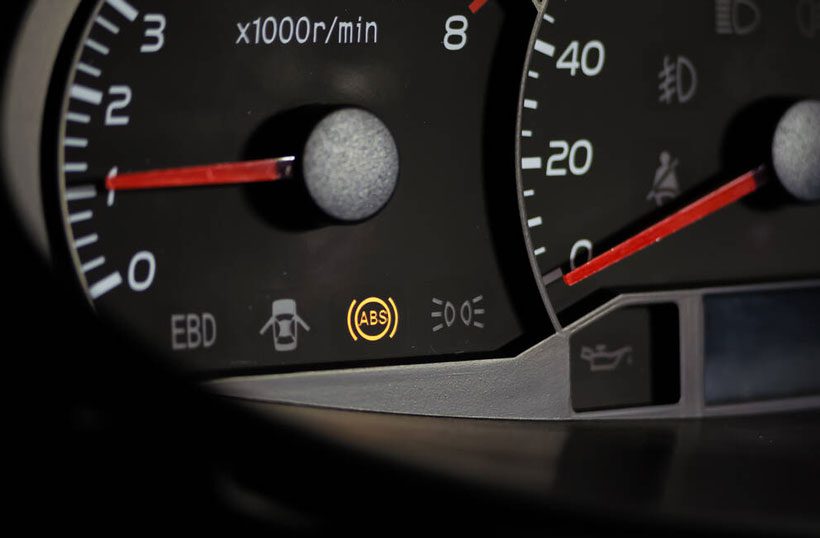
The ABS (Anti-lock Braking System) light coming on and off can indicate a problem with the ABS in your vehicle. There are several possible reasons for this to happen:
1. Faulty Wheel Speed Sensor
The ABS uses information from wheel speed sensors to detect if a wheel is about to lock up during braking. The sensors send signals to the ABS control module, which then adjusts the braking force to prevent the wheels from locking up.
When a wheel speed sensor malfunctions, it can send incorrect signals to the control module, which can trigger the ABS light to come on and off.

Causes
The most common causes of this issue include
- Dirt or debris on the sensor
- Faulty sensor wiring
- Broken or damaged sensor
How To Fix It?
It is essential to have the issue diagnosed and repaired by a qualified technician. Depending on the cause of the issue, the technician may recommend one or more of the following solutions:
- Cleaning the sensor
- Repairing or replacing the wiring.
- Replacing the sensor
Steps on How to Replace Wheel Sensor
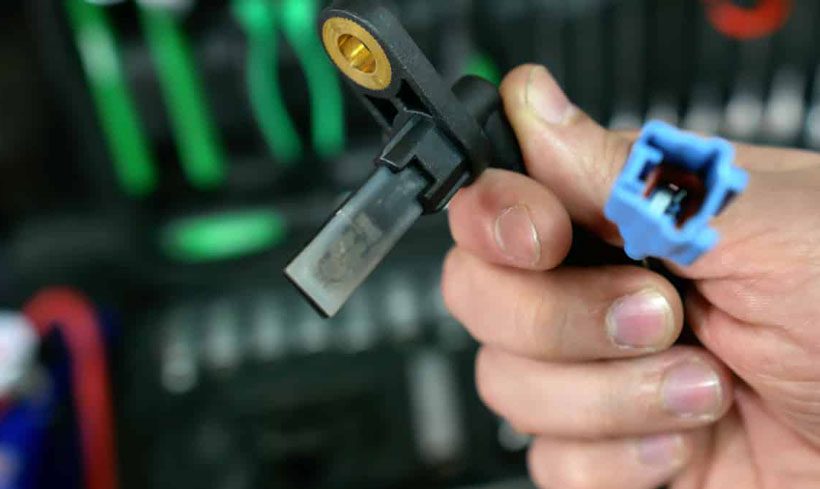
Step 1: Gather the necessary tools and parts: jack, jack stands, lug wrench, socket set, pliers, new wheel speed sensor.
Step 2: Park the vehicle on a level surface and engage the parking brake.
Step 3: Identify the faulty wheel speed sensor location using the repair manual.
Step 4: Disconnect the sensor’s electrical connector.
Step 5: Remove the bolt or clip securing the sensor in place.
Step 6: Carefully remove the sensor from its mounting.
Step 7: Insert the new sensor into the mounting hole.
Step 8: Secure the new sensor using a bolt or fastener.
Step 9: Reconnect the electrical connector to the new sensor.
Step 10: Repeat the process for any other faulty sensors.
Step 11: Lower the vehicle by removing the jack stands.
Step 12: Test the ABS system by driving at a safe speed.
Step 13: Observe if the ABS warning light remains off.
Step 14: Take a short test drive to ensure proper functionality.
How Much Does it Cost To Fix Wheel Speed Sensor?
The average cost of replacing an ABS wheel speed sensor is between $200 and $400 per sensor, depending on the car model and labor costs. The wheel speed sensor itself will cost you between $100 and $150, and the labor will cost you between $100 and $300 However, the actual cost may vary depending on the make and model of your vehicle, as well as the location of the repair shop.
2. Lower Brake Fluid level
Brake fluid is an essential component of the ABS in your vehicle. It plays a crucial role in transmitting hydraulic pressure from the brake pedal to the brake components. The insufficient brake fluid in the reservoir can trigger the ABS light to illuminate intermittently.
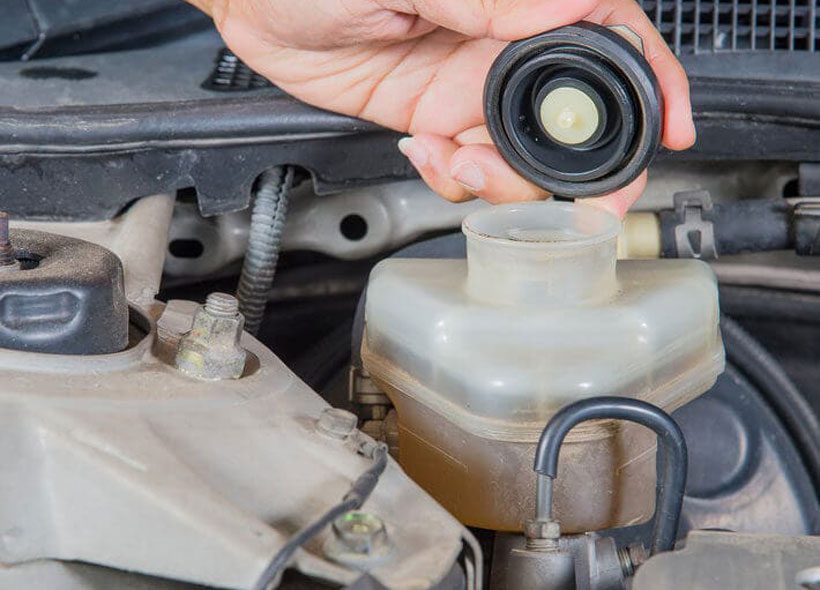
The ABS relies on proper hydraulic pressure, and low brake fluid can disrupt its operation. This pressure is necessary for the ABS to function correctly and prevent wheel lock-up during sudden stops or hard braking.
Causes
The low fluid level in the brake system is caused by:
- Presence of leaks in your brake system
- Worn out brake pads.
How to Fix It?
- Step 1: Check the fluid level yourself by consulting your vehicle owner’s manual.
- Step 2: Add brake fluid to the reservoir if the level is low
- Step 3: Check for any signs of leaks in the brake system. it is vital to have a certified mechanic inspect it before beginning any repairs.
- Step 4: It’s crucial to inspect and replace brake pads as needed
Steps on How to Replace Brake Pads

Step 1: Here are the steps to replace brake pads on a bicycle
Step 2: Gather the necessary tools and materials: New brake pads, Allen wrench or box wrench, clean cloth or rag.
Step 3: Release the brake tension by squeezing the brake lever.
Step 4: Locate the brake caliper and remove the retaining bolt or pin.
Step 5: Slide out the old brake pads from the caliper.
Step 6: Inspect and clean the brake caliper if necessary.
Step 7: Insert the new brake pads into the caliper, aligning them with the rim’s braking surface.
Step 8: Adjust the position of the brake pads as needed.
Step 9: Secure the brake pads by tightening the retaining bolt or pin.
Step 10: Test the brakes by squeezing the brake lever and checking for proper engagement and alignment.
Step 11: Make any necessary adjustments for alignment or brake tension.
Step 12: Seek professional assistance if uncertain or uncomfortable performing the task.
Remember to prioritize safety when working on your bicycle’s braking system and consult a professional if you are unsure about any step of the process.
How Much Does It Cost to Fix Lower Brake Fluid
The cost to fix a lower brake fluid level in ABS depends on the specific issue and the extent of the repair needed. Here are some cost estimates from the search results:
- Brake fluid flush: The cost of a brake fluid flush can range from $10 to $20 for the fluid if you do it yourself, or up to $100 in labor costs if you take your car to a mechanic1.
- ABS diagnosis: The average cost for an ABS diagnosis is between $83 and $104, with labor costs estimated between $83 and $1042.
- ABS fluid level sensor replacement: If the issue is a bad or failing ABS fluid level sensor, the cost can range from $145.99 to $170.00 for a brake system inspection
3. Faulty ABS Module
The ABS control module is a vital component of the ABS system in a vehicle. It manages and regulates the functions of the entire system. Also, ensuring that the brakes work properly and that the vehicle maintains stability and control during braking.
If the ABS control module malfunctions, it can cause the ABS light to come on and off. Here are the common causes and solutions:
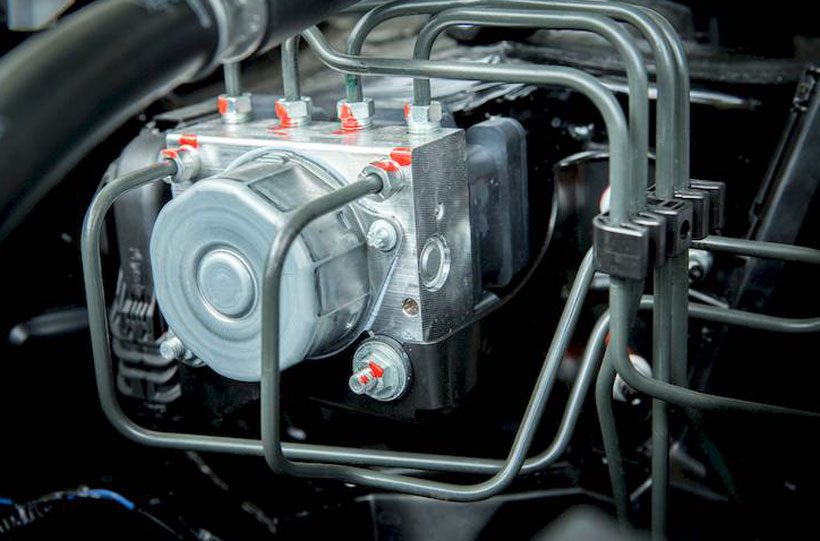
Causes
- Damaged or broken electrical connections or circuits
- Wear and tear or other factors such as heat, moisture, or vibration.
- Software malfunctions or is corrupted.
How To Fix It
- A qualified technician can use diagnostic tools (like an OBDII scanner) to scan the vehicle’s system and identify the cause of the problem.
- Regular maintenance and inspection can help prevent ABS module failure. This includes checking the brake fluid level, keeping the brake system clean and free of debris, and ensuring that all electrical connections are secure.
- Repair or replace the faulty components. In some cases, the entire module may need to be replaced.
Steps on How To Replace Faulty Module
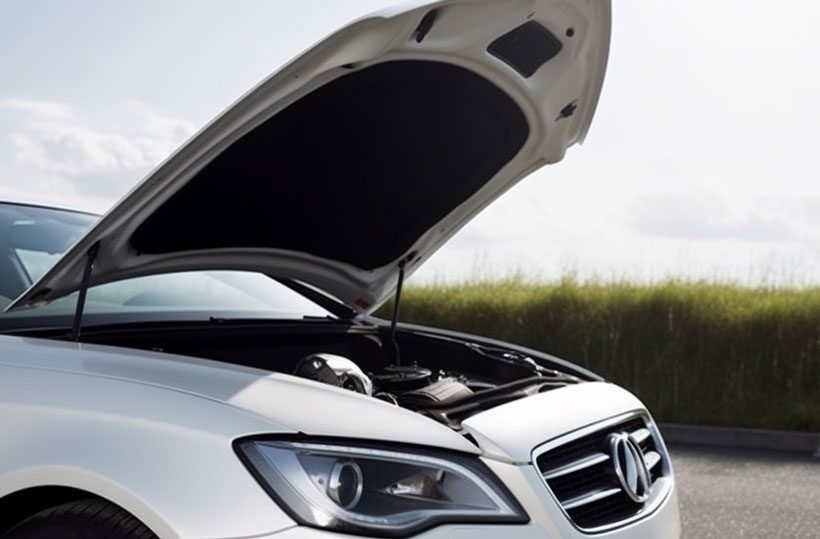
Step 1: Park the vehicle on a level surface, turn off the ignition and disconnect the battery
Step 2: Consult the vehicle’s service manual or seek professional assistance to determine the specific module related to the ABS issue.
Step 3: Obtain the required tools, such as wrenches, sockets, screwdrivers, and any specialized tools recommended by the manufacturer.
Step 4: Purchase a compatible replacement module from a reputable source or an authorized dealer.
Step 5: Locate the module by referring to the service manual or seeking guidance from a professional.
Step 6: Carefully detach all electrical connectors connected to the faulty module.
Step 7: Take note of the connectors’ positions and labeling for proper reinstallation.
Step 8: Unscrew or unbolt the mounting hardware securing the faulty module in place.
Step 9: Take out the old module from its position, ensuring not to damage any surrounding components.
Step 10: Take out the old module and place the new module in the correct orientation
How Much Does it Cost To Fix Faulty Module?
The cost to fix a faulty ABS module can vary depending on several factors such as the car model, labor costs, and the extent of the damage. The average ABS control module replacement cost is between $200 and $1500, depending on the car model and labor costs. The ABS control module should cost between $150 and $900 for parts, and the rest is the cost of labor. If you complete the replacement yourself, labor won’t run you anything.
4. Loose or Damaged Wiring
The ABS has electrical connections and wiring that can become loose or damaged over time. When the connections are intermittent or faulty, it can trigger the ABS light to illuminate intermittently.
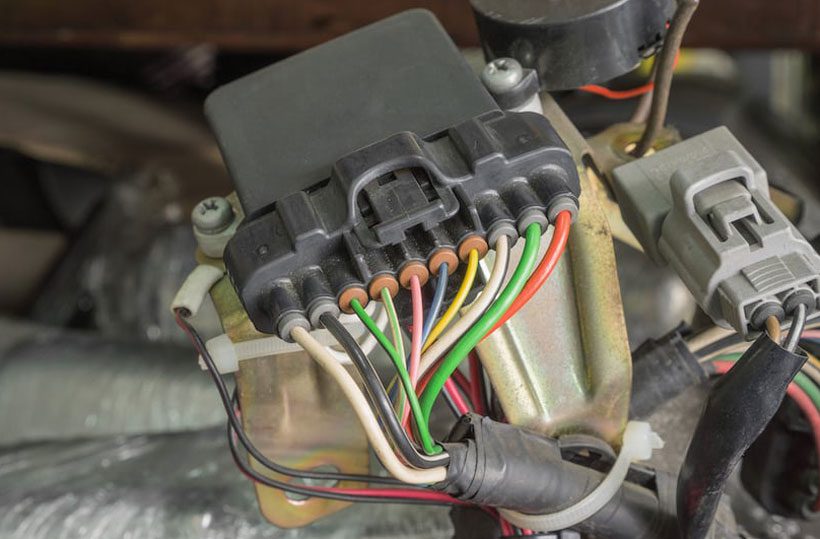
Causes
Common causes of the ABS light coming on and off in wiring issues includes:
- Frayed or damaged wires
- Loose or corroded connections
- Short circuits
How To Fix It
- A qualified technician can inspect the wiring in the ABS and repair any frayed or damaged wires.
- Clean connections to ensure proper communication between the ABS and the sensors.
Steps on How To Clean Connections

Step 1: Park your car on a hard, flat surface and turn off the engine
Step 2:Lift your vehicle using a car jack so you can safely remove the wheels.
Step 3:Loosen the lug nuts from the tire and remove the wheel from the vehicle
Step 4: Locate the ABS sensor and remove it from the rest of the suspension by removing the bolts that attach it to the suspension
Step 5: dirt and debris off the sensor with a clean, dry microfiber towel
Step 6:Be gentle when wiping to avoid damaging the sensor.
Step 7: If there is grime or small bits of metal on the sensor, use warm, soapy water to scrub away dirt from the sensor
Step 8: Make sure that the sensor dries completely before reattaching it.
Step 9: Avoid using any type of chemical cleaning solution on the ABS sensor as it could damage it, meaning you’d have to replace it with a new one
Step 10: Once you have cleaned the sensor, reattach it to the suspension by reinserting and tightening its bolts
Step 11: Replace the wheel and tighten its lug nuts
Step 12: Repeat these steps for each wheel with an ABS sensor.
Test drive your car to ensure that the ABS light no longer comes on after cleaning the sensors.
- Replace faulty wiring
Steps on How To Replace Faulty Wire
Step 1: Ensure safety precautions: Park the vehicle on a level surface, engage the parking brake, and disconnect the battery.
Step 2: Identify the faulty wiring: Inspect the ABS system for visible signs of damage or issues with the wiring.
Step 3: Gather necessary tools and replacement wiring: Wire cutters, wire strippers, crimping tools, electrical tape, heat shrink tubing, and replacement wires.
Step 4: Disconnect electrical connections: Disconnect the connectors or terminals connected to the faulty wiring.
Step 5: Remove damaged wiring: Cut the faulty wiring before and after the damaged section, and strip the insulation from the ends.
Step 6: Prepare replacement wiring: Cut replacement wiring to match the removed section and strip the insulation from the ends.
Step 7: Connect replacement wiring: Twist together the existing and replacement wires, use crimp connectors or solder the connections securely.
Step 8: Insulate the connections: Slide heat shrinks tubing over the connections or use electrical tape to insulate and protect the spliced area.
Step 9: Reconnect electrical connections: Plug the connectors back into their respective ports, ensuring a secure connection.
Step 10: Test the ABS system: Reconnect the battery, start the vehicle, and test the ABS system for proper functionality.
How Much Does it Cost To Fix A Faulty Wire
A technician will plug the code reader into your ABS controller and look for a trouble code stored in the controller’s memory. This code will at least give you an idea of what’s going on. For a modest service fee ($50 to $100), you can get an idea of what’s wrong with your ABS system.
5. Other Sensor or Brake System Issues
Sometimes, problems with other sensors or components in the brake system can trigger the ABS light to come on and off. This could include issues with the brake pedal position sensor, brake pressure sensor, or other related components.

How To Fix It
- Locate the ABS fuse in the fuse box and inspect it to check if it’s blown. A blown fuse needs to be replaced with another one and it must be of the same rating.
- Or use an OBD-II scanner to retrieve the error codes associated with the ABS light. These codes will provide more specific information about the issue
- Also, Inspect the ABS rings or tone rings. The ABS rings are toothed rings located on the wheel hub or axle shaft. Check the rings for any cracks, damage, or debris buildup. Clean or replace them if necessary.
Symptoms Of A Faulty ABS Module
When there is a problem with the ABS module in a vehicle, several symptoms may indicate its malfunction, along with the ABS light coming on and off. Here are some common signs to look out for:
- ABS System Failure
- Irregular Brake Operation: You may notice that the brakes feel overly sensitive or grab suddenly during normal braking. On the other hand, the brakes may feel spongy or unresponsive, requiring increased effort to slow down or stop the vehicle.
- The ABS Pump is Running Continuously, resulting in a humming or buzzing noise from under the hood.
- ABS System Error Messages
- Inability to Retrieve ABS Codes.
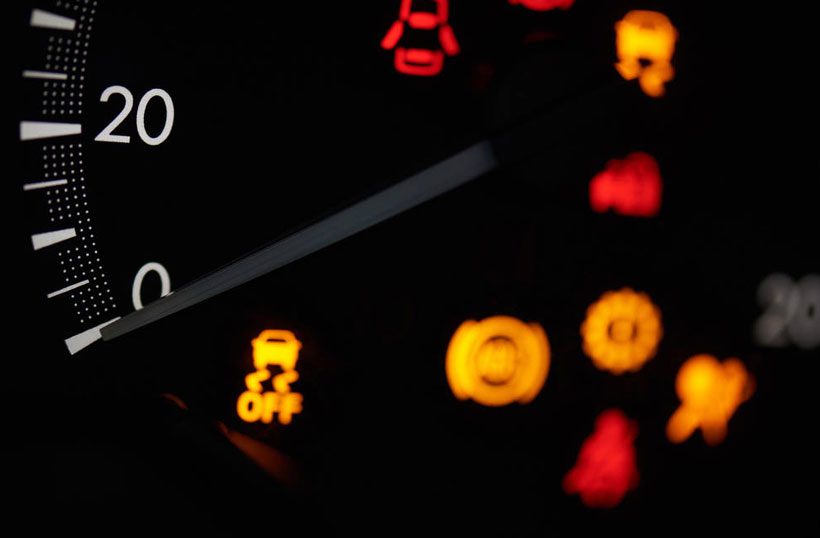
FAQs
Some questions people also have regarding ABS light illuminating issues and answers to them.
The ABS light may fix itself in some cases. If the light is on due to a transient issue that confuses the ABS controller, turning the ignition key off and back on may fix the issue. If the condition repeats, further investigation is needed
When the ABS light comes on by itself, it is generally safe to continue driving your car to your destination. Your regular brakes will remain functional. However, it is essential to exercise caution since ABS will not engage during emergencies.
If you experienced a sudden braking event, especially on a wet or gravel surface, and felt slight shaking in the brake pedal and front of the car. Additionally, it’s accompanied by rapid juddering noise. All of these indicate the functioning of your ABS.
Final Words
The ABS light might come on and off due to a variety of reasons. Common reasons are a faulty wheel speed sensor, low brake fluid level, wiring issues, a malfunctioning ABS control module, and sensors.
The ABS plays a vital role in preventing skidding and maintaining vehicle stability. Making it essential to address any warning lights or symptoms promptly to avoid potentially hazardous situations.
It’s crucial to have any issues with the ABS properly diagnosed and repaired by a qualified technician to ensure safe and effective brake function.

